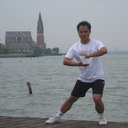[Role and mechanism of Salvia miltiorrhiza Bunge in alleviating injury induced by hypoxia/reoxygenation in HK-2 cells].
Atslēgvārdi
Abstrakts
OBJECTIVE
Salvia miltorrhiza Bunge (SMB) is a traditional Chinese herb, which is considered to promote blood flow and remove blood stasis. This study examined whether SMB can alleviate injury induced by hypoxia/reoxygenation (H/R) in human kidney proximal tubular cells-2 (HK-2 cells).
METHODS
There were 3 experimental groups: control, H/R injury and SMB-treated H/R injury. H/R injury of HK-2 cells was induced by first covering the cells with and then removing liquid paraffin wax. Different concentrations of compound SMB solution (0.05%, 0.10%, 0.15% or 0.20%) were administered to the SMB-treated H/R injury group before the hypoxic injury. After 4, 12 and 24 hrs of hypoxia and 4, 12, 24 and 48 hrs of reoxygenation, morphologic changes of HK-2 cells were observed under an inverted microscope. Cell viability was measured by the MTT method. Lactate dehydrogenase (LDH) activity in the culture supernatants was assayed using biochemical methods; TNF-alpha levels were determined by radioimmunoassay (RIA).
RESULTS
The number of HK-2 cells was significantly reduced in the H/R injury group after hypoxia, and reached a nadir 24 hrs after hypoxia treatment. Various concentrations of SMB-treated groups showed significantly greater number of HK-2 cells than the H/R injury group. SMB solution (0.10%) produced the best effect. The levels of LDH and TNF-alpha in the H/R injury group were significantly increased, and reached a peak between 24 hrs of hypoxia and 4 hrs of reoxygenation when compared to the control group. Pre-treating with 0.10% SMB resulted in significantly lower levels of LDH and TNF-alpha than in the untreated H/R injury group at various time points of H/R.
CONCLUSIONS
SMB has protective effects against H/R injury of HK-2 cells, possibly through inhibition of inflammatory cytokines.


